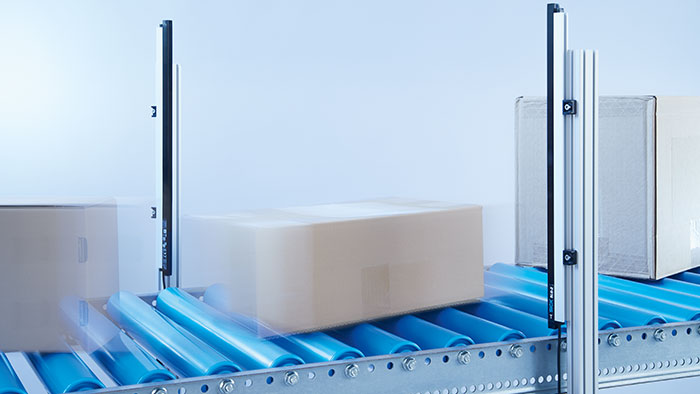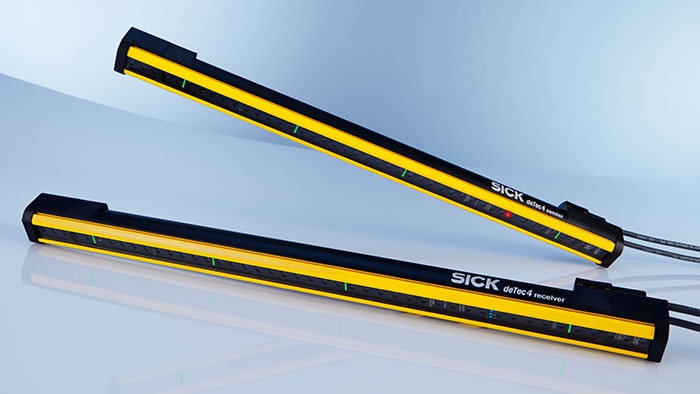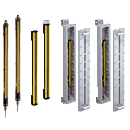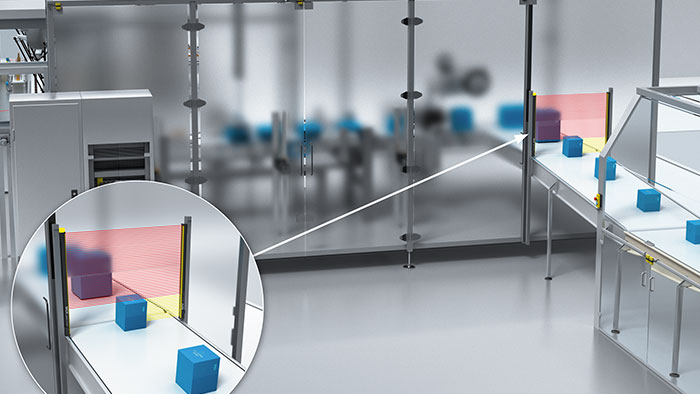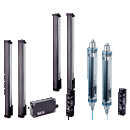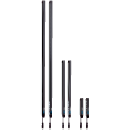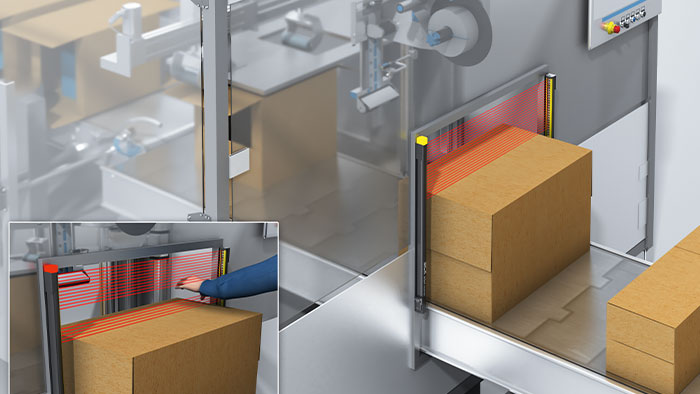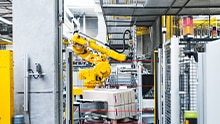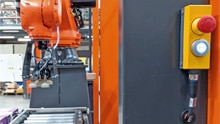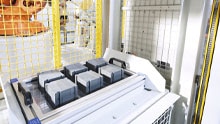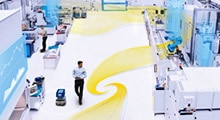Efficiency and safety in the material flow are gaining importance in industry. These two requirements, which often conflict with each other in industrial practice, can be met by combining safety light curtains and automation light grids, which are based on a similar technology. During product development, SICK focuses on achieving both goals – more efficiency with the highest possible safety – to thereby create suitable sensor functions and accessory concepts.
Light curtains for efficient automation and more safety in the material flow
Safety light curtains usually detect people and, if necessary, initiate safety measures whereas automation light grids detect objects and control relevant downstream processes. Thanks to its broad portfolio of technologies, SICK is able to combine both effectiveness and safety in equal measure in a single product by integrating measurement and safety functions. These solutions optimize automated logistics processes and ensure maximum machine safety.
Light grid versus light curtain
From a basic technology perspective and based on their historical development, light grids or light curtains consist of an arrangement of several individual opto-electronic sensors and an evaluation unit. The sensor system contains a sender unit and a receiver unit. When the light beams emitted by the sensor reach the receiver unit, the beam will continue to be received by the receiver until it is interrupted or affected by an object. In this way, multiple light beams create a two-dimensional detection field (referred to as a protective field in safety technology terminology) that enables objects to be detected in a non-contact manner. These sensor types have historically been referred to by experts as “light grids” or “light curtains” and these terms are used interchangeably.
Light curtains for safety and also automation
Depending on the function of the technology, SICK distinguishes in its product portfolio between “safety light curtains” and “automation light grids”. The term “light curtain” serves as a higher level category in this article. The individual beams of such a light curtain are arranged at a specific distance from one another, which determines the “MDO” (minimum detectable object) or “resolution”. The beams are evaluated cyclically in order to ensure a reliable and fault-free detection. The cycle time and the number of individual beams determines the response time, which is an important safety-related parameter and is also decisive for automating downstream processes.
Safety light curtains with extended functions for more productivity
For more productivity in the material flow, the deTec4 safety light curtain for example has an integrated pattern detection for objects with a rectangular contour and reliably differentiates between people and materials. The function analyzes individual beam data – as typically occurs for automation light grids – and the results can be used for machine safety purposes. This avoids unnecessary downtimes, and ensures maximum safety while maintaining a consistent productivity. Smart Box Detection, which requires no external signals or further sensor technology, provides further advantages in differentiating between people and materials. The protective field above a passing object remains active and thereby offers additional protection against reaching in.
This allows a cost-effective and flexible machine design that significantly optimizes the space requirement for the safety function.
Automation light grids detect and measure challenging objects
Ensuring a precisely consistent spacing between products during transport and handling is essential for the availability of conveying equipment and in production machines. Light curtains detect the leading and trailing edge of the conveyed objects. The SLG-2 automation light grids from SICK are equipped with an innovative multiple cross beam technology. This increase the resolution in the detection field and enables even especially small, very flat or irregularly shaped objects (e.g. polybags) to be precisely detected.
A further productive feature is the transparent mode of the MLG-2 measuring automation light grid which enables even transparent objects to be reliably detected and their height and width measured. This improves the productivity of downstream processes and increases availability because defective objects can be detected and sorted out by measurement and protrusion monitoring.
Productivity boost by combining both product worlds
Since the light curtain applications from SICK for both automation and safety come with the simple yet high-performance IO-Link interface, all acquired data can be used to control downstream processes. This enables, for example, the beam data transmitted via IO-Link to also be used for a height measurement or quality inspection of the conveyed products. The deTec4 safety light curtain achieves this with a resolution of 14 or 30 millimeters, and an automation light grid significantly more precisely with resolutions up to 2.5 millimeters. In the packaging sector where not only safe differentiation between people and materials is required but also the detection of unclosed parcels, the deTec4 safety light curtain takes care of both these tasks. It addition to its actual safety function in the horizontal movement direction, the device also detects, via IO-Link, open tabs as height steps in the parcel. No safety function is required in the vertical direction, so the open tabs in this case can be detected via IO-Link using an SLG-2 automation light grid.
Easier integration and commissioning
The standard IO-Link communication interface also brings a range of additional advantages that increase productivity: shared infrastructure, the consistent SOPAS Engineering Tool operating software, and reduced integration effort and costs. The commissioning process is also significantly easier due to the uniform housing and connection design and the use of identical accessories such as brackets, cables, etc. For maximum plant availability, diagnostic data are provided based on a uniform Smart Sensor concept thereby making maintenance and error analyses more effective.
Close proximity recognized and utilized for more productivity
Because automation and safety tasks in machines and systems are in close proximity to each other or even located in the same process step, SICK consolidated its solutions portfolio based on the company's long-standing experience in both areas. This enables both tasks to be solved cost-effectively, sometimes using just one product. By combining the best of both product worlds in this way, it is possible to save time and costs in the material flow, increase the system throughput, and thereby increase the profitability and productivity of the conveying process.

